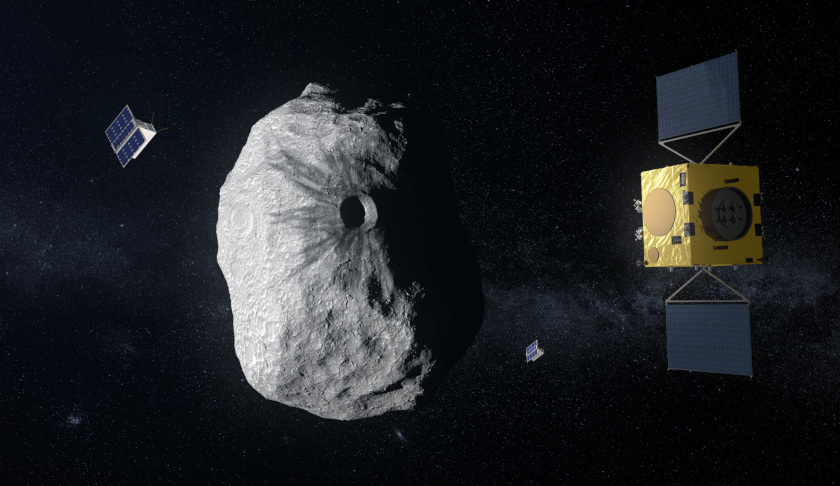From afar, one asteroid looks much like another, until comparing them directly. Checking the well-known scale chart prepared by the Planetary Society of all asteroids and comets so far surveyed by spacecraft, the larger Didymos asteroid would form a modest dot, with its smaller moonlet struggling to make a single pixel.
Didymos itself is just 780 metres across, smaller than any asteroid visited by a probe other than the 350-metre diameter Itokawa rubble pile visited by Japan’s first Hayabusa spacecraft and the 500-metre diameter Bennu, around which NASA’s OSIRIS-REx mission is currently in orbit.
Hera lead scientist Patrick Michel, CNRS director of research of France’s Côte d'Azur Observatory, said, "Didymoon’s miniscule size really becomes clear when you look at other asteroids."
The Didymos pair will serve as the first test of NASA's DART planetary defence system in 2022. The DART spacecraft will impact Didymoon in an attempt to change its orbit around its larger twin, to test the feasibility of asteroid deflection.
Following the impact, ESA's Hera will survey the Didymos asteroids in 2026 to gather key information that will not be available from Earth-based observations, including Didymoon’s mass, its surface properties and the shape of DART’s crater.
ESA Hera project scientist Michael Küppers said, "This will give us a good estimate of the impact’s momentum transfer, and hence its efficiency as a deflection technique. These are fundamental parameters to enable the validation of numerical impact models necessary to design future deflection missions. We will better understand whether this technique can be used even for larger asteroids, giving us certainty we could protect our home planet if needed."
Didymoon provides a perfect test case, as it is in the riskiest class of near-Earth asteroids because of its size: larger bodies can more easily be tracked, smaller bodies will burn up or do limited damage, while a Didymoon-sized impactor could devastate an entire region of our planet.
Hera is currently under study to be presented for approval by ESA’s Space19+ Council meeting of European space ministers, and is planned for launch in 2023.
Hera would be ESA’s next mission to a small body after the Rosetta comet-chaser, benefiting from the expertise acquired during that 12-year mission. Long-term planning is crucial to realise future missions, and to ensure the continued development of innovative technology, inspiring new generations of European scientists and engineers.

